What Did I Just Order? 14 Weird Chinese Dishes (That Actually Taste Great)
Ordering food in China isn’t just a culinary journey — it’s a full-on adventure for your imagination.
For many visitors (and even some locals), reading Chinese dish names can feel like decoding a cryptic menu of animal parts, dramatic metaphors, and eyebrow-raising translations. But fear not — behind these strange and sometimes shocking names often lie delicious, comforting, and even artistic dishes.
Let’s dive into 14 real Chinese dish names that might leave you wondering, “Wait… what did I just order?”
🫖 1. 鸭屎香 (Yāshǐ xiāng)
Literal Translation: Duck Poop Fragrance
Actually: A famous variety of oolong tea from Guangdong, known for its floral aroma and mellow taste.
The story goes that the original tea bush grew in soil that looked like duck poop— dark, rich, and fertile. When curious neighbors asked the farmer about the tea’s unique aroma, he jokingly said it came from “鸭屎土” (duck poop soil) to keep them from stealing his secret plant. The name stuck — but don’t worry, the tea has a smooth, floral fragrance with no hint of its earthy origin.
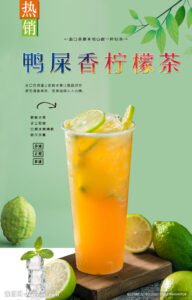
🦆 No ducks, no poop — just really good tea.
🍢 2. 掌中宝 (Zhǎngzhōngbǎo)
Literal Translation: Treasure in the Palm
Actually: Skewers of crispy chicken cartilage, beloved in street BBQs.
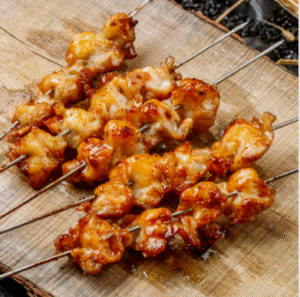
Crunchy, chewy, and totally addictive.
🐟 3. 松鼠鱼 (Sōngshǔ yú)
Literal Translation: Squirrel Fish
Actually: A deep-fried sweet-and-sour fish, carved and fried to look like a squirrel’s bushy tail.
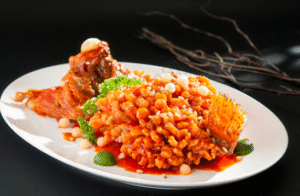
Looks fun, tastes amazing.
🍗 4. 口水鸡 (Kǒushuǐ jī)
Literal Translation: Saliva Chicken
Actually: Cold poached chicken drenched in spicy Sichuan sauce.
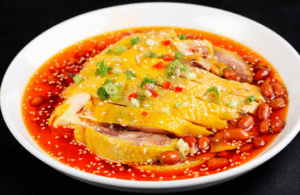
The name means it’s so good, it makes your mouth water.
🔥 5. 毛血旺 (Máo xuè wàng)
Literal Translation: Hair, Blood, and Prosperity 😳
Actually: A bold Sichuan hot pot with duck blood, tripe, tofu, and vegetables in chili oil.
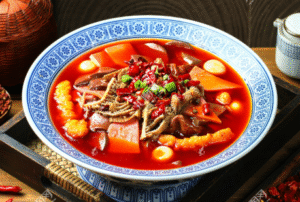
Not for the faint-hearted — but beloved by spice lovers.
🍮 6. 豆腐脑 / 豆花 (Dòufu nǎo / Dòuhuā)
Literal Translation: Tofu Brain / Tofu Flower
Actually: Silky, soft tofu served sweet in the south or savory in the north. The texture is so soft and delicate, it resembles the smooth consistency of animal brains — a term used more for texture than ingredients.
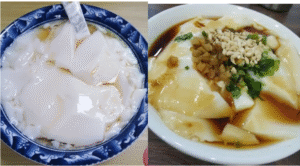
A comforting favorite across China.
🐱 7. 猫耳朵 (Māo ěrduo)
Literal Translation: Cat Ears
Actually: Small ear-shaped snacks or noodles — not feline-related at all.
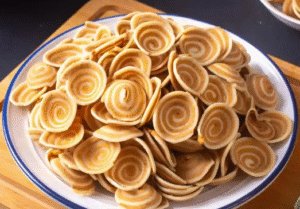
Cute, crispy, and delicious.
🐴 8. 驴打滚 (Lǘ dǎgǔn)
Literal Translation: Rolling Donkey
Actually: Sweet glutinous rice rolls coated in soybean flour, resembling a donkey rolling in dust.
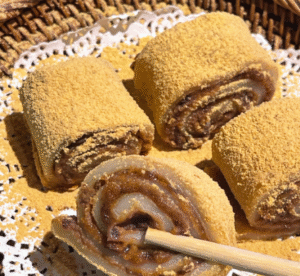
A northern Chinese treat with a memorable name.
🐜 9. 蚂蚁上树 (Mǎyǐ shàng shù)
Literal Translation: Ants Climbing a Tree
Actually: Glass noodles stir-fried with minced pork. The pork bits cling to the noodles like ants on twigs.
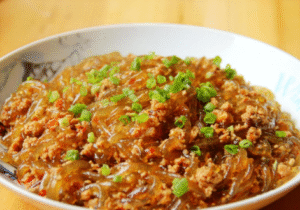
More poetic than it sounds!
❤️ 10. 夫妻肺片 (Fūqī fèipiàn)
Literal Translation: Husband and Wife Lung Slices
Actually: A spicy cold dish of sliced beef, tripe, and tongue in chili oil — named after the married couple who popularized it in Chengdu.
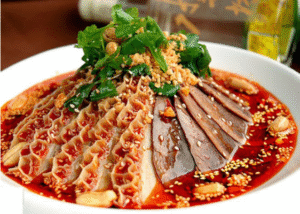
A love story told through spice.
🐟 11. 鱼香肉丝 (Yúxiāng ròusī)
Literal Translation: Fish-Fragrant Shredded Pork
Actually: Pork stir-fried with garlic, chili, and vinegar — using flavors traditionally associated with fish dishes.
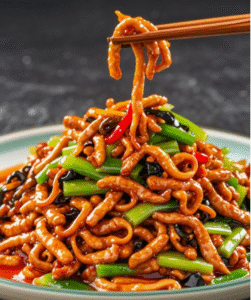
No fish, just fragrant.
🌶️ 12. 虎皮青椒 (Hǔpí qīngjiāo)
Literal Translation: Tiger Skin Green Peppers
Actually: Fried green peppers with blistered, wrinkled skins resembling tiger stripes.
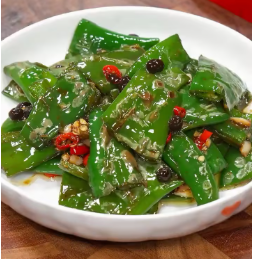
Smoky, spicy, and totally vegetarian.
💦 13. 撒尿牛丸 (Sāniào niúwán)
Literal Translation: Urine Beef Balls 😨
Actually: Soup-filled beef meatballs that burst when bitten into — from Chaoshan cuisine.
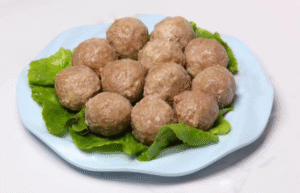
The “urine” refers to the surprise squirt, not the ingredients!
🦁 14. 红烧狮子头 (Hóngshāo shīzitóu)
Literal Translation: Braised Lion Head
Actually: Giant, juicy pork meatballs braised in rich soy sauce. Called “lion heads” for their shape.
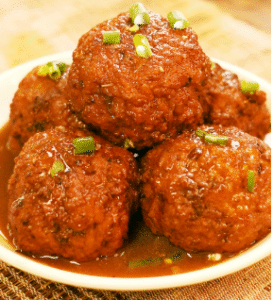
No lions were harmed.
🎒 Tip for Travelers:
When in doubt, ask what’s in the dish — or just go for it.
Some of the most oddly named foods end up being the tastiest surprises. Chinese cuisine is rich with history, wordplay, and regional flair. Learning a little about the language opens up a whole new appreciation for what’s on your plate.
So next time you see “Ants Climbing a Tree” or “Fish-Fragrant Pork” on the menu, don’t panic — embrace the mystery. You might just find your new favorite dish.
Ready to learn more fun (and confusing) Chinese phrases? Join us at SNMandarin — where language learning meets real-life culture.

